You definitely still can do it, you just need to maintain a constant airflow over the piece and give it *plenty* of time between coats. Personally, I hate the stuff, however you can't deny it's a bit safer for us poor schmucks stuck breathing the stuff on a daily basis.
I don't know what specific water based basecoats you get over there, but I've got some experience with Auto-Air, granted in a booth, and small jobs only in my garage, but the same principles apply.
The recommended temp for spraying is above 70 degrees- any colder and you are waiting a *long* time between coats. You can still use your existing gun - usually a 1.2 or 1.3mm fluid tip is recommended. The colors tend to come ready to spray out of the bottle, however you can further reduce them with their "flash reducer" or whatever they call it. Prep is the same - take it up to 600-800 grit. Personally I went 600 on solids and 800 on metallics / pearls.
I have no experience with water based primers and sealers, as I stuck with solvent bourne - and that will always be my own preference. I shot over a fully prepared substrate that got hit with a final coat of epoxy primer, then cracked open once cured. From there I laid down their "base coat sealer" and let that flash and moved onto the base coats. The goofy thing with the base coats is in a booth you typically can re-coat in about 15-20 minutes, in open conditions (no booth) it's sometimes upwards of an hour between coats. You can cut that time down slightly by keeping a constant airflow over the piece. If you don't let each coat cure fully before laying the next they WILL lift if you go wet/wet. It's ugly, and a total pain in the arse. Hands down solvent bourne rules the roost as far as that is concerned.
I usually did one *super light* tack coat to get a good base laid (just like you lay a guide coat over a filler primer, THAT light). Let it flash completely, and then the second coat you can apply a bit heavier, let that flash, and third coat you can really start to lay it on, don't go *too* wet though, or it will lift the underlayers. Stuff is a *total* pain in the rear... You can actually cure the stuff with IR lamps if you have those, otherwise it's just tons of airflow, or the best would be a baking booth. I've done motorcycles prior and actually used a heat gun, just keep the thing about 10-12" off the surface and keep it moving. They recommended 6" when I went to their class, I tried 6" on low heat, the stuff STILL blistered on me.
When you do go to clear it if you use solvent bourne start with an *extremely* light tack coat and let that burn in, longer than you would give your first coat with solvent based paints. I was doing about 45 minutes, then you can start to finally lay on your medium-wet coats. If you are using a water bourne clear, I can't help you there as I have zero experience with it, nor do I care to get said experience. From what I remember auto-air actually recommends using a slower hardener than you usually would as well which lets the clear really flow into the water based base coatss.
The only thing I liked about it, was the dirt simple cleanup. Toss the filters used to strain the waterbourn, and run some of their gun cleaner / restorer through it, and literally wash the mix cups out with water and you are done. Cut down hugely on the amount of waste solvent / thinner.
Hope that helps, and always read the mfr's sheets, as I'm sure everybody is different, and with the stuff being as finicky as it is, you are better off going by what they say.
Edit: That's my watch sitting on a set of cycle tins I shot in my garage with Autoair. Would have taken a heck of a lot less time using solvent bournes, but that's where the EPA is pushing us so I figured better learn now and be prepared rather than scrambling when the times comes. AutoAir white pearl & black base coat buried in HOK's UC35. No assembled / finished shots as those tins are long gone and I don't know where I saved the rest of the pictures, apologies.

My .02.. I'd rather stick with solvent bourne, given a choice.




